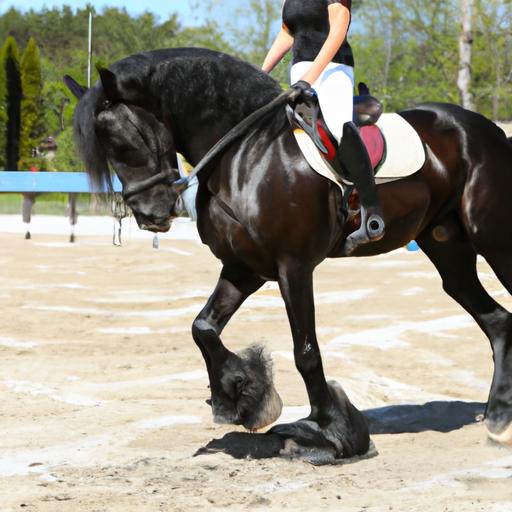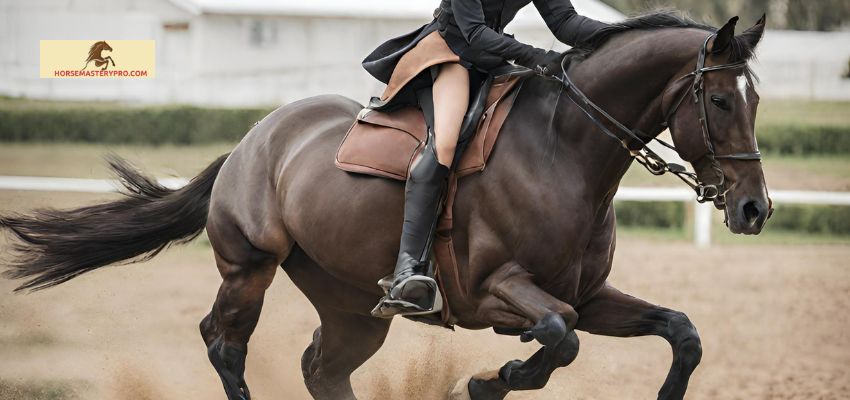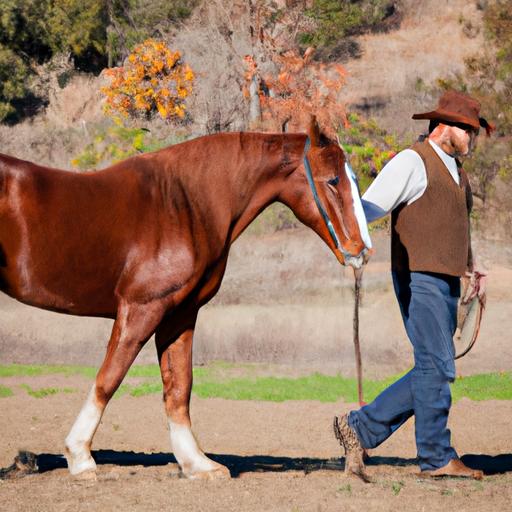Unlock the secrets of kr horse training for enhanced performance and safety. Learn effective techniques and principles to build a strong bond with your equine partner.
Introduction to KR Horse Training

Are you a passionate equestrian seeking to enhance your horse’s performance and ensure their safety? Look no further than KR Horse Training! In this article, we will delve into the importance of proper horse training and explore the techniques and principles that make KR Horse Training so effective.
Importance of proper horse training for performance and safety
Training is not just about teaching horses a few tricks; it is the key to unlocking their full potential. Proper horse training plays a critical role in improving their performance and ensuring their safety. Whether you’re an experienced rider or a novice, investing time and effort into training is fundamental to establishing a harmonious partnership with your equine companion.
Overview of KR Horse Training techniques and principles
KR Horse Training stands out among the various training methods available today. Rooted in a deep understanding of horse behavior and psychology, KR Horse Training emphasizes building trust, respect, and clear communication between horse and rider. This approach focuses on positive reinforcement and reward-based training to foster a mutually beneficial partnership.
Throughout this article, we will explore the incredible benefits of KR Horse Training, the key components that make it successful, effective techniques to implement, and how to overcome common challenges that may arise during the training process. So, saddle up and get ready to embark on a journey towards a remarkable connection with your equine companion.
Stay tuned for the next section, where we will delve into the benefits of KR Horse Training. But first, let’s understand why training your horse is crucial for their well-being and your riding experience.
Benefits of KR Horse Training

Improved Communication: Harmonizing Horse and Rider
Horses are magnificent creatures with their own unique language. KR Horse Training enables you to bridge the communication gap between you and your equine companion. By understanding their body language, subtle cues, and responses, you can establish a deeper connection. Through this enhanced communication, you’ll be able to convey your intentions clearly, leading to smoother rides and seamless transitions.
Enhanced Obedience and Responsiveness: Unleashing the Horse’s Potential
With KR Horse Training, you’ll witness a remarkable transformation in your horse’s obedience and responsiveness. By utilizing positive reinforcement techniques, you can shape their behavior and encourage desired responses. As you consistently reward their efforts, they become more attentive and willing to follow your cues. This increased obedience and responsiveness will not only make your rides safer but also elevate your horse’s performance to new heights.
Development of Trust and Respect: Nurturing a Profound Connection
Trust and respect are the cornerstones of any successful horse-rider relationship. KR Horse Training focuses on building these essential qualities by emphasizing positive interactions and rewarding good behavior. As you establish a foundation of trust, your horse will become more willing to engage in training exercises and embrace new challenges. This mutual respect creates an unbreakable bond between you and your equine partner, leading to an enriching and fulfilling equestrian journey.
Stay tuned for the next section, where we will explore the key components of KR Horse Training. But first, let’s reflect on the incredible benefits you can unlock through this unique training approach. Are you ready to witness the magic of KR Horse Training unfold in your equestrian endeavors? Let’s dive in!
Key Components of KR Horse Training

Understanding horse behavior and psychology
To become a skilled horse trainer, it is essential to have a deep understanding of horse behavior and psychology. Horses are highly intuitive animals with unique personalities and instincts. By familiarizing yourself with their natural behaviors and communication cues, you can effectively interpret and respond to their needs.
By learning to read their body language, facial expressions, and vocalizations, you can gain insights into their emotions and intentions. This knowledge will enable you to tailor your training approach to suit each individual horse, considering their temperament, past experiences, and learning style.
Establishing a strong foundation through groundwork exercises
Groundwork exercises form the building blocks of KR Horse Training. Before mounting a horse, it is crucial to establish a solid foundation through groundwork exercises. These exercises include leading, lunging, and long-lining, among others. Groundwork not only helps in developing a horse’s physical fitness and coordination but also establishes clear communication and respect between horse and trainer.
Through groundwork, you can teach your horse basic commands, such as halt, walk, trot, and canter, using voice cues and body language. It also provides an opportunity to address any behavioral issues, such as spookiness or disobedience, in a controlled environment. By investing time in groundwork, you lay the groundwork for a successful and safe riding experience.
Building trust and respect through positive reinforcement techniques
In KR Horse Training, building trust and respect is paramount. Positive reinforcement techniques play a vital role in fostering a strong bond between horse and rider. By rewarding desired behaviors with treats, praise, or a gentle pat, you motivate your horse to repeat those behaviors willingly.
Positive reinforcement not only enhances the horse’s learning experience but also strengthens the trust and respect they have for you as their trainer. It creates a positive and enjoyable training environment, where the horse feels valued and understood. Through consistent use of positive reinforcement, you can shape your horse’s behavior and build a solid foundation for more advanced training exercises.
Stay tuned for the next section, where we will explore effective techniques for KR Horse Training. Understanding these techniques will help you take your training to the next level and unlock your horse’s true potential.
Effective Techniques for KR Horse Training
Positive Reinforcement: Clicker Training
One of the most effective techniques in KR Horse Training is positive reinforcement, and clicker training is a valuable tool in this approach. By using a clicker, a small handheld device that emits a distinct sound, you can mark and reinforce desired behaviors in your horse. The clicker serves as a clear and consistent signal that indicates to the horse when they have performed the desired action correctly. Accompanied by a reward, such as a treat or praise, the clicker helps reinforce positive behaviors and encourages your horse to repeat them.
Reward-Based Training for Desired Behaviors
Reward-based training is a cornerstone of KR Horse Training. By rewarding your horse for performing desired behaviors, you create a positive association with those actions. This encourages your horse to willingly and enthusiastically comply with your requests. Rewards can include treats, verbal praise, or even a gentle pat on the neck. Remember to offer the reward immediately after your horse performs the desired behavior to reinforce the connection between the behavior and the reward.
Progressive Desensitization for Overcoming Fears and Phobias
Horses can develop fears or phobias towards certain objects, situations, or stimulProgressive desensitization is an effective technique used in KR Horse Training to help horses overcome these fears gradually. By exposing your horse to the feared object or situation in a controlled and gradual manner, you can help them become desensitized and more comfortable over time. Start by introducing the stimulus at a distance or in a less intense form, and gradually decrease the distance or increase the intensity as your horse becomes more relaxed and confident. Patience and consistency are key when employing this technique.
In the next section, we will discuss common challenges that may arise during KR Horse Training and provide strategies for overcoming them. Stay tuned to further enhance your understanding of this remarkable training method.
Common Challenges in KR Horse Training and How to Overcome Them
Dealing with resistance and stubbornness in horses
One of the most common challenges horse trainers encounter is resistance and stubbornness in their equine partners. Horses, like humans, have their own personalities and preferences. Some may be naturally more headstrong or resistant to certain exercises. However, with the right approach, you can overcome these challenges and establish a cooperative relationship with your horse.
To address resistance and stubbornness, it is crucial to remain patient and persistent. Start by breaking down the training exercises into smaller, achievable steps. By gradually introducing new concepts and reinforcing positive behaviors, you can help your horse understand what is expected of them. Additionally, incorporating positive reinforcement techniques, such as rewards and praise, can motivate your horse to willingly participate in the training process.
Addressing fear-based behaviors and building confidence
Fear-based behaviors can hinder a horse’s progress in training. Whether it’s a fear of certain objects, sounds, or environments, it is essential to address these fears to build your horse’s confidence and trust. Remember, a confident horse is more likely to perform at their best.
Start by introducing gradual exposure to the fearful stimuli in a controlled and safe manner. This technique, known as progressive desensitization, allows your horse to gradually overcome their fears by associating positive experiences with the previously frightening stimulPatience and reassurance are key during this process, as rushing or forcing your horse can exacerbate their anxiety.
Maintaining consistency and patience throughout the training process
Consistency and patience are paramount when it comes to horse training. Horses thrive in a structured and predictable environment. Establishing a consistent routine and training schedule helps horses understand what is expected of them and fosters a sense of security.
Additionally, it is crucial to remain patient throughout the training process. Horses are intelligent creatures, but they may require time to understand and execute new commands or behaviors. Avoid becoming frustrated or resorting to harsh methods. Instead, maintain a calm and composed demeanor, offering clear cues and rewarding small steps of progress. Remember, each horse is unique, and training timelines may vary.
By effectively addressing resistance, fear-based behaviors, and maintaining consistency and patience, you can overcome common challenges encountered during KR Horse Training. In the next section, we will explore the conclusion of our journey and the overall significance of KR Horse Training.


